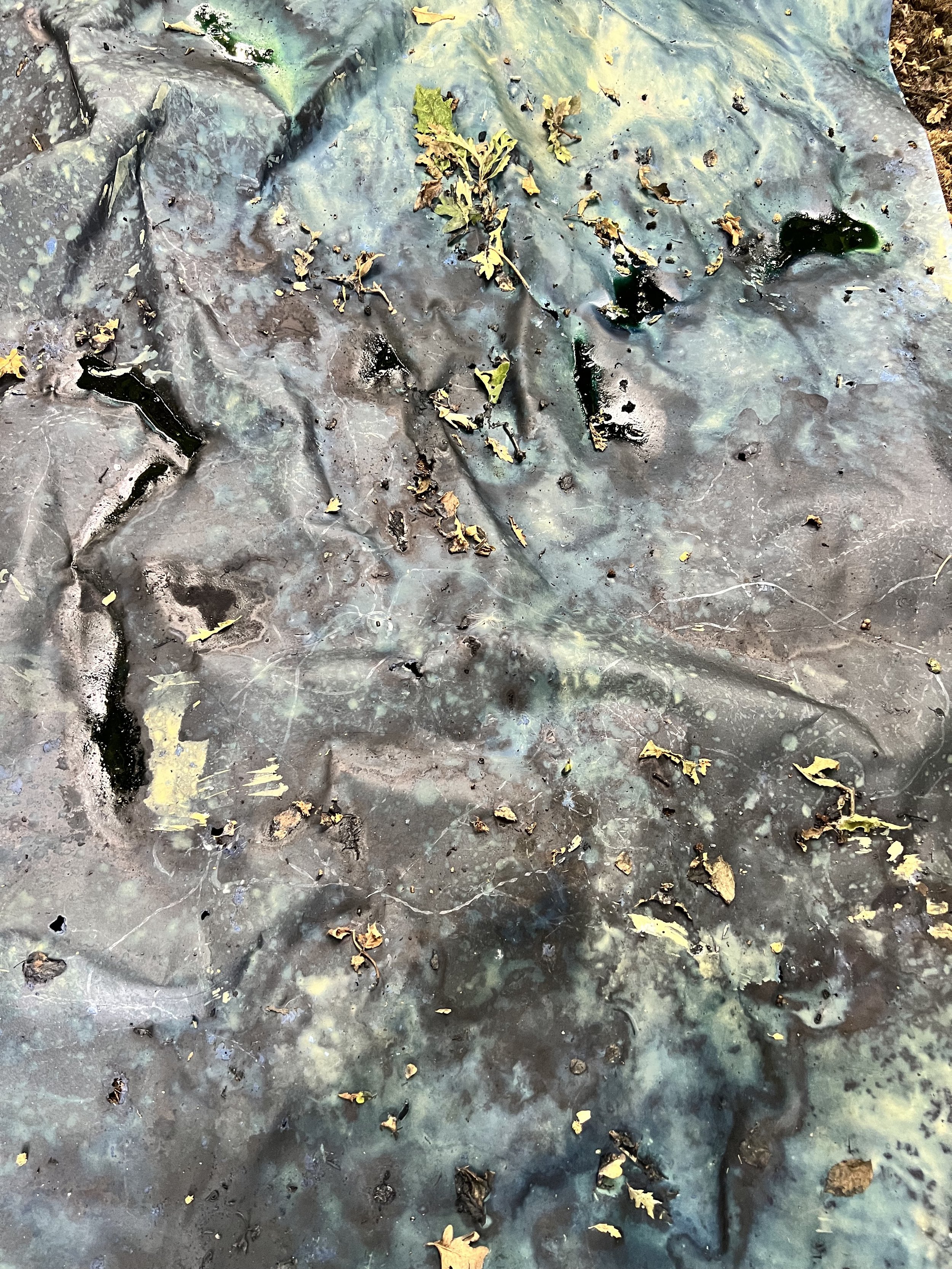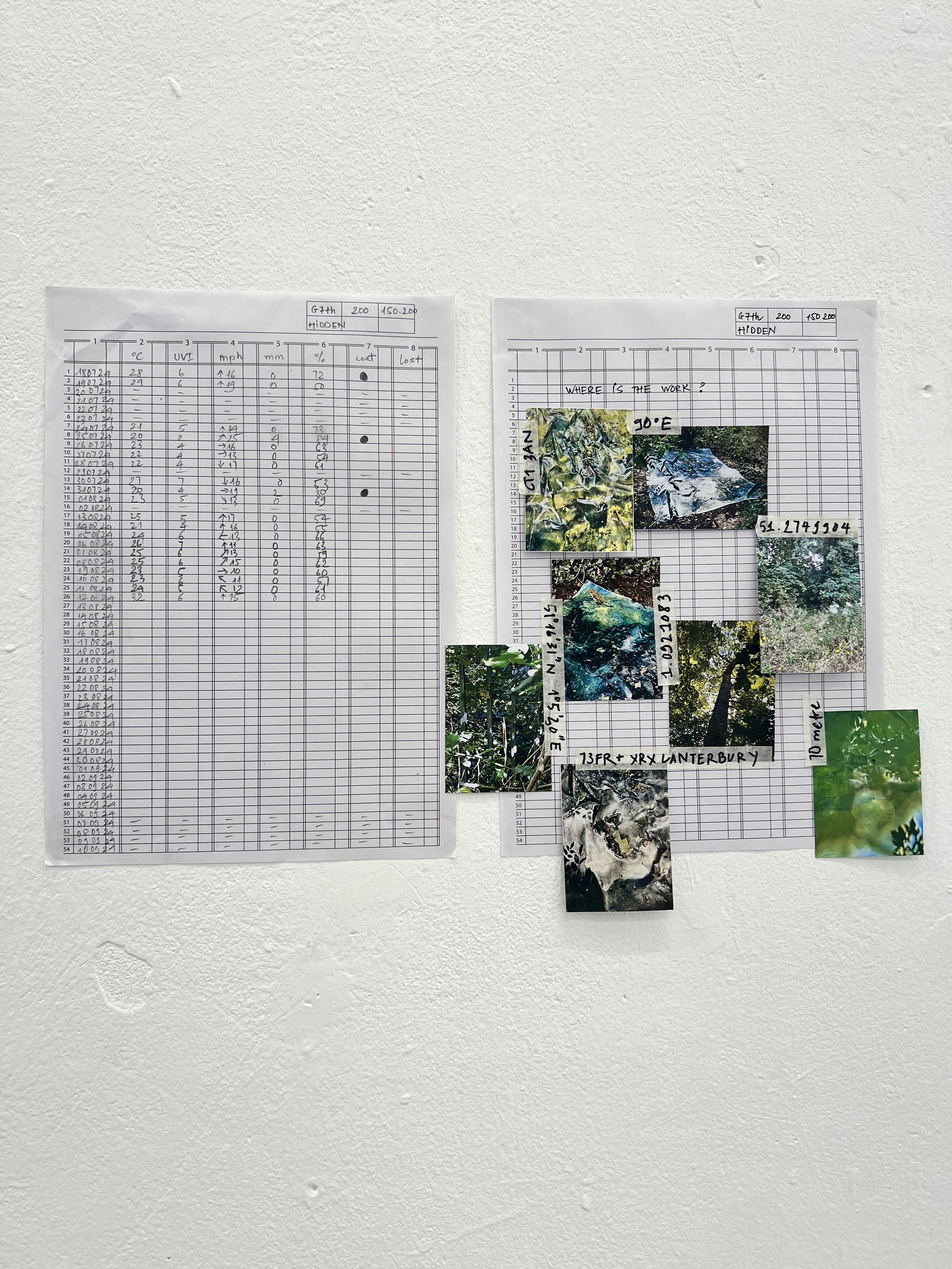Where is the work? Could it have been eaten? Stolen? Thrown away? Disintegrated? Washed out? Blown away? Degenerated? Buried? Burned? Hidden? Forgotten? Recycled? Absorbed? Misplaced? Discarded as rubbish? These questions have yet to be solved and are not meant to be solved.
The question "Where is the work?" has always been asked throughout the cyclical journey of creation, destruction, collection, and release. The body of work is created with the intention of disappearing, embodying a desire for its own absence. The creation process, conducted outdoors, involves coating papers with cyanotype and exposing them to unpredictable weather conditions, allowing an unforeseen self-destructive process to unfold. As a result, the work is in a state of constant flux, with each change giving rise to new forms, colours, and textures, while previous aspects fade to invisibility. Each fragment of paper, collected and reconstructed, extends the form beyond its apparent limits, pushing the boundaries of its sculptural potential. The work does not point toward its current state but rather toward its reincarnation of what has been and the promise of what it might yet become.
Months of exposure to varying weather conditions have liberated me from a sense of ownership over the work. While I am conscious of the consequences of this decay-based approach, there is still oscillation and ambiguity in recording, protecting, and preserving the work. In essence, I am no longer the work's creator but rather one of the agents facilitating its transformative journey. Despite being installed in the gallery after extensive outdoor production, the work is still destined for a gradual, inevitable end. The timing, location, and manner of its full collapse remain uncertain, yet I can predict its eventual outcome: nothing.





























